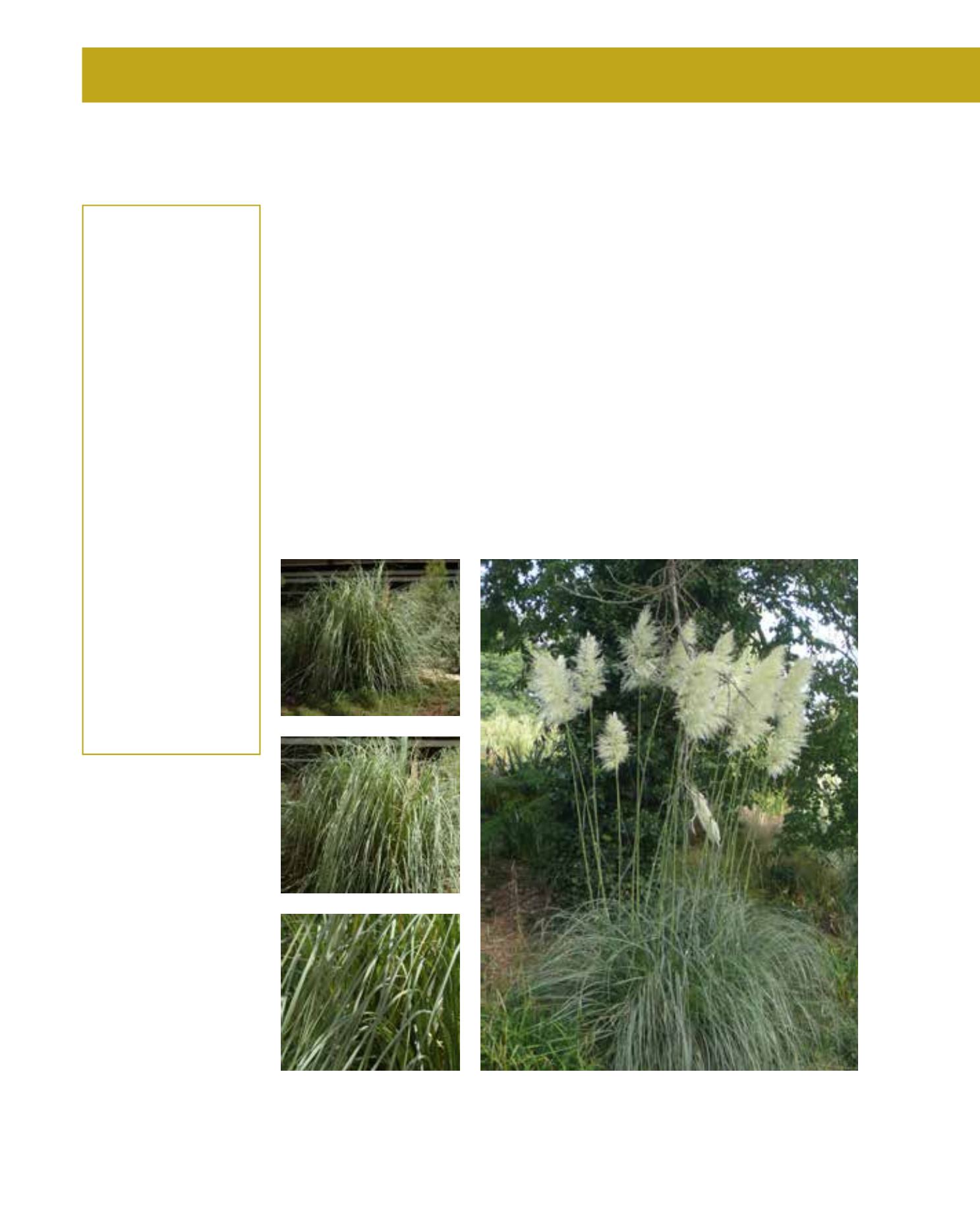

GENERAL
Origin
:
temperate,
sub-Mediterranean
Vigour
:
normal growth
rate
Humidity
:
semi-arid, semi-
humid
Propagation :
sowing and
pricking out,
division
Maintenance :
moderate
CONDITIONS
Urban climate :
resistant
Dessication :
resistant
Stagnant water :
vulnerable
Irrigation
:
low
Salinity/ppm :
very high (8000
ppm)
Hardiness
:
-21°C
SHAPE
Type
:
grasses
Height
:
1 m-5 m
Spread
:
1 m-5 m
Foliage
:
semi-evergreen
FLOWER
Colour
:
white, secondary:
silver
Size
:
50 cm
Period
:
August - October
FRUIT
Type of fruit :
caryopsis
Fruit size
:
0.2 cm
Pampas Grass is the distinctive plant of Argentina’s grasslands; in Arriyadh, it withstands hot,
dry winds and is frost-tolerant. There is potential to use this plant more, but it demands space.
It grows to a massive clump of 2 up to a maximum of 5 metres high, and about the same width.
Leaves are pale-green and may reach 2 metres in length and are 1 cm wide. They are bent down,
giving the plant a fountain-like appearance. Male and female panicles grow on different plants
and the females are the more attractive ones. In late summer and autumn, silky plumes appear.
When dried, they make long-lasting, ornamental elements in arrangements. In mild climates, it
is evergreen, but frost may force it to become dormant. Damaged plants generally recover when
cut back to the ground, but are weakened if this is practised annually. Pampas Grass tolerates full
to partial sun and tolerates drought and high salinity, but requires good drainage. Any handling
must be done very carefully because the serrated edges can lead to painful cuts to the skin. To
keep it from injuring pedestrians, it should not be located close to pathways or seating areas.
Pampas Grass makes an impressive solitary plant or may be planted in groups for screening. It
readily multiplies by dividing, and propagation by sowing is also common. Cultivars have to be
reproduced vegetatively. Varieties show different sizes, such as the dwarf ‘Pumila’, growing to
about 1.5 metres, or another flower colour such as ‘Rosea’, with light-pink plumes.
119
Cortaderia selloana,
Poaceae
Pampas Grass
















